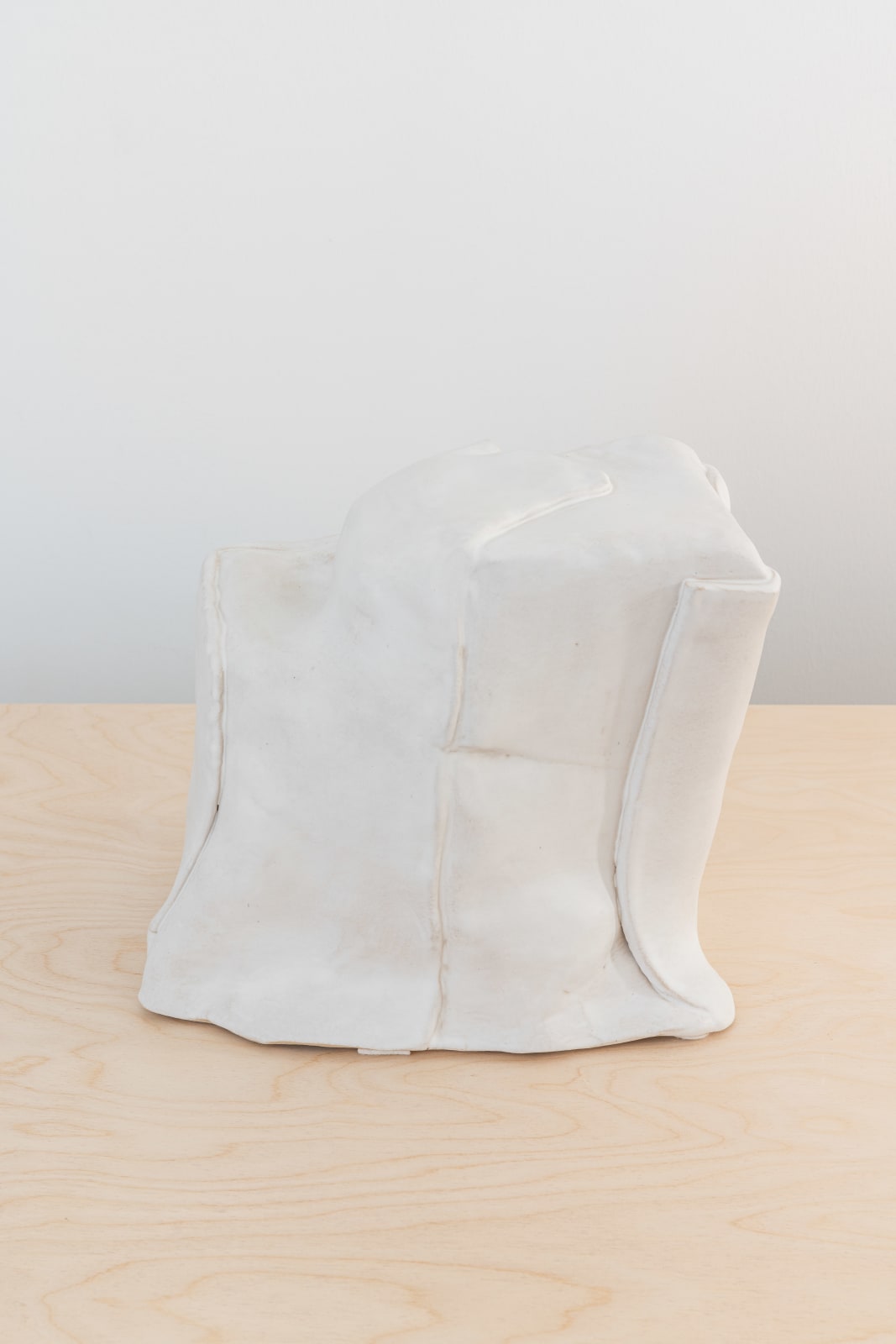-
Sébastien de Ganay
CERAMIC 104, 2021Ceramic29 x 32 x 26 cm
11 3/8 x 12 5/8 x 10 1/4 inchesCopyright The ArtistPhoto: Dirk TackeWeitere Abbildungen
In der Werkgruppe der CERAMICS spielt de Ganay mit der Gegenüberstellung und mit der auf den ersten Blick paradoxen Verbindung von Fremdheit und Vertrautheit: „Ich versuche eine unerwartete Präsenz herzustellen,...In der Werkgruppe der CERAMICS spielt de Ganay mit der Gegenüberstellung und mit der auf den ersten Blick paradoxen Verbindung von Fremdheit und Vertrautheit: „Ich versuche eine unerwartete Präsenz herzustellen, die scheinbar vertraut und ohne sichtbare Spuren der Produktion ist. Eine Präsenz, die zufällig entsteht, wenn ein vertrauter Gegenstand das Gefühl eines ‚Déjà-vu‘ vermittelt, aber ohne eine Verbindung zu einer persönlichen Geschichte steht. Eine Präsenz, die leicht annehmbar und selbstverständlich ist und gleichzeitig mit ihrer stillen, rätselhaften Vertrautheit überzeugt.” De Ganay ordnet seine CERAMICS als „familiar objects“ ein, im Gegensatz zu dem Begriff der „specific objects“, welcher 1965 durch den Künstler und Kritiker Donald Judd geprägt wurde. „Spezifische Objekte“ sind spezifisch, weil der Künstler ihre Form, ihren Maßstab, ihre Proportionen und ihre Materialität sorgfältig aufeinander abstimmt. Hingegen sind die CERAMICS gleichzeitig rätselhaft und vertraut, als wären sie zufällig, aber selbstverständlich so entstanden. Diese ambivalente Wirkung nutzt der Künstler in den CERAMICS, wie auch den Seascapes, als eine Spielform, die Dinge von ihrem Sein zu emanzipieren und als Möglichkeit, sie wie etwas anderes aussehen zu lassen als das, was sie wirklich sind. De Ganay nutzt in CERAMIC 72, CERAMIC 90 und CERAMIC 104 Keramik als skulpturales Material, dass Bewegung und Abdrücke in sich aufnimmt und konserviert. Die Glasur der Skulpturen erinnert an matt-weißen Carrara-Marmor und wie de Ganay sagt: „Sie sind nichts weniger als der Ausdruck von Potenzialen und Metamorphosen im Entstehen.“
In the “CERAMICS” work group, de Ganay plays with the juxtaposition and with what at first glance appears to be a paradoxical connection between foreignness and familiarity: “I'm trying to create an unexpected presence that is inherently familiar and without any visible traces of production. A presence that arises by chance when a familiar object conveys the feeling of 'déjà-vu' but has no connection to any personal story. A presence that is easily acceptable and self-evident and at the same time convinces with its quiet, enigmatic familiarity." De Ganay classifies his “CERAMICS” as “familiar objects”, in contrast to the term “specific objects”, which was coined in 1965 by the artist and critic Donald Judd. “Specific objects” are specific because the artist carefully coordinates their shape, scale, proportions and materiality. In comparison, the “CERAMICS” are both puzzling and familiar, as if they were created by natural chance. The artist uses this ambivalent effect in the “CERAMICS” as well as in the “Seascapes”, as a game to emancipate things from their being and as a possibility to make them look like something other than what they really are. In “CERAMIC 72”, “CERAMIC 90” and “CERAMIC 104”, De Ganay uses ceramics as a sculptural material that absorbs and preserves movement and impressions. The glaze of the sculptures is reminiscent of matt white Carrara marble and, as de Ganay says: "They are nothing less than the expression of potentials and metamorphoses in the making."









